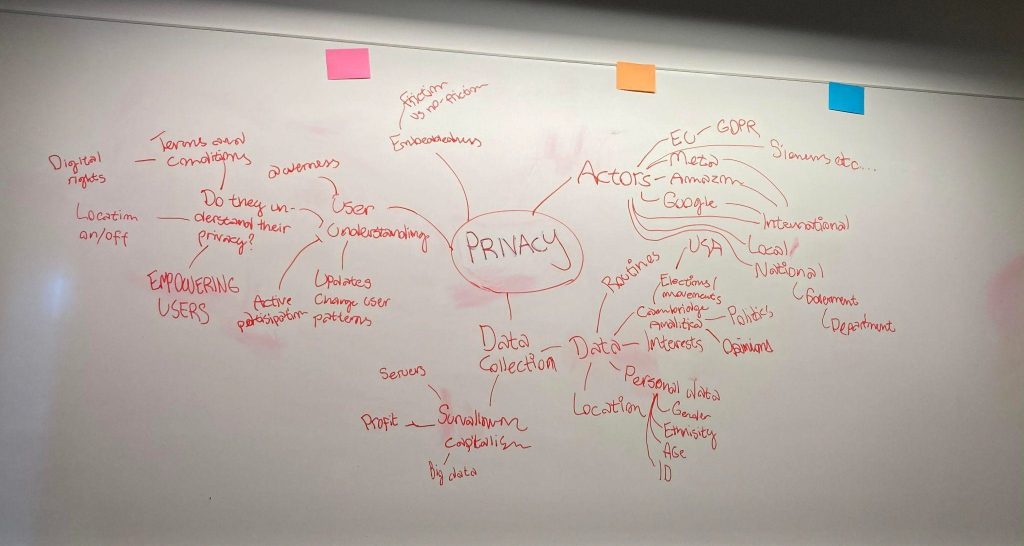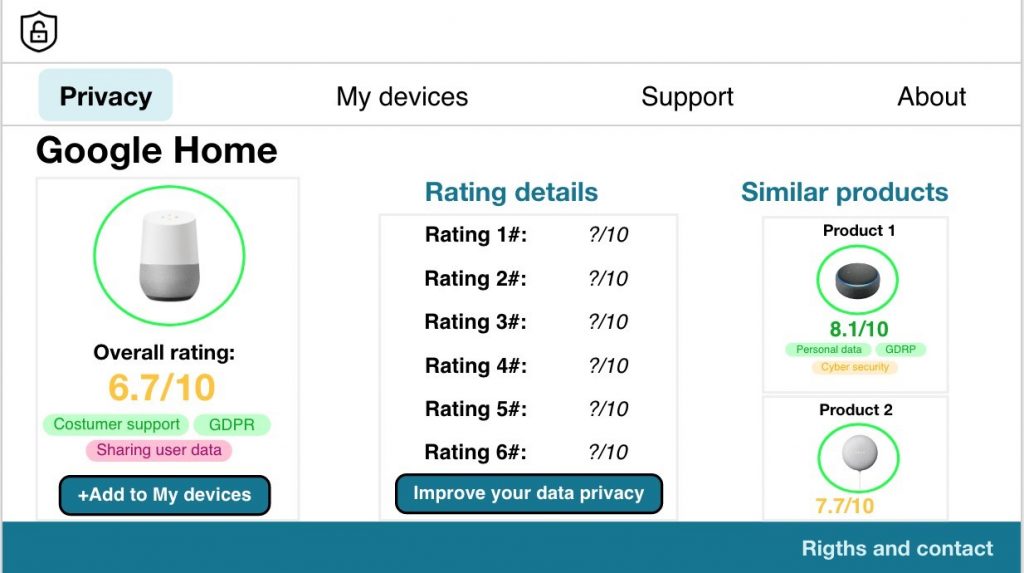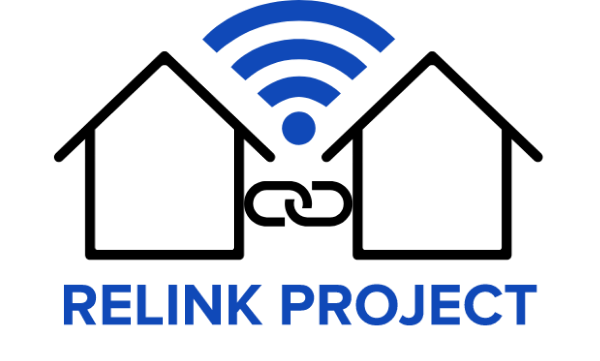This project is a student project and its members consist of Jonas Longva Pettersen, Jens Christian Skovholt, Jonas Aasen Dybdahl og Cecilie Opperud. We are all third year students studying Informatics: Design, use and interaction. Although all of us are studying the same thing, we all have slightly different backgrounds and interests. This meant that we all had different strengths which have been very useful for us during the research and development process.
The project had a focus on transformative design and was carried out in collaboration with the Re-Link research project. Similarly to Re-Link, we focused on smart homes. However, in our project we wanted to research data privacy and how we can encourage users to make active choices where they utilize their rights. This was because we wanted to contribute to a systemic change by mobilizing the users.
When we were conducting research for the project we applied various different research methods. These helped us come up with ideas and theories for how we could approach our research problem. With these ideas in place, we utilized several different design methods which gave us more specific ideas which we could use for creating prototypes.

When the time came for us to create prototypes, it was important for us that it would be an iterative process. This way we could learn about what works and what does not. We started by making low-fidelity prototypes in order to communicate our ideas with each other within the group. Then we would create high-fidelity prototypes in order to propose concrete examples of solutions to the problems we worked on. One example of this is our very first prototype (see the picture below). The idea behind this prototype was that users would be able to see and rate various smart-device privacy standards. This way users could make better purchasing decisions.

It did not take long before we ran into problems concerning exactly how the devices would be rated. Therefore we decided to leave this idea behind. We went through some other ideas as well, but eventually we came up with the idea that would end up becoming our final prototype. We have nicknamed this prototype “The Datahub”. This prototype approaches the issue in a slightly different way. The prototype has several parts to it which we think address the main issues we focused on. The prototype consists of a home screen that shows the users how their personal data network is structured, featuring all their stakeholders. By clicking the stakeholders, the users will be able to see what data that specific stakeholder has about them. The users can also click these attributes to learn exactly what they entail. This way the users can learn about their data.


The second part of the prototype has a focus on helping the users empower themselves concerning data privacy. This is done via a questionnaire that establishes the user’s data habits. Once the user’s data habits are sufficiently understood by the system, the system will offer a personalized universal dataplan that can be implemented across all the devices of the user. This makes it very easy for the users to ensure that all their privacy settings are just the way they want, across all their devices. (For a more detailed explanation of the prototype, see our full report.)


We believe that our solution makes it easy for users to learn about their personal data and to make changes in their privacy settings, which will hopefully inspire users to make a stand when it comes to data privacy, which in turn might lead to a positive change in the power balance between the consumers and the producers. The complex nature of data privacy means that our prototype cannot be an “end-all” solution, but rather a tool to set us on the right path.
Read the full report here:
